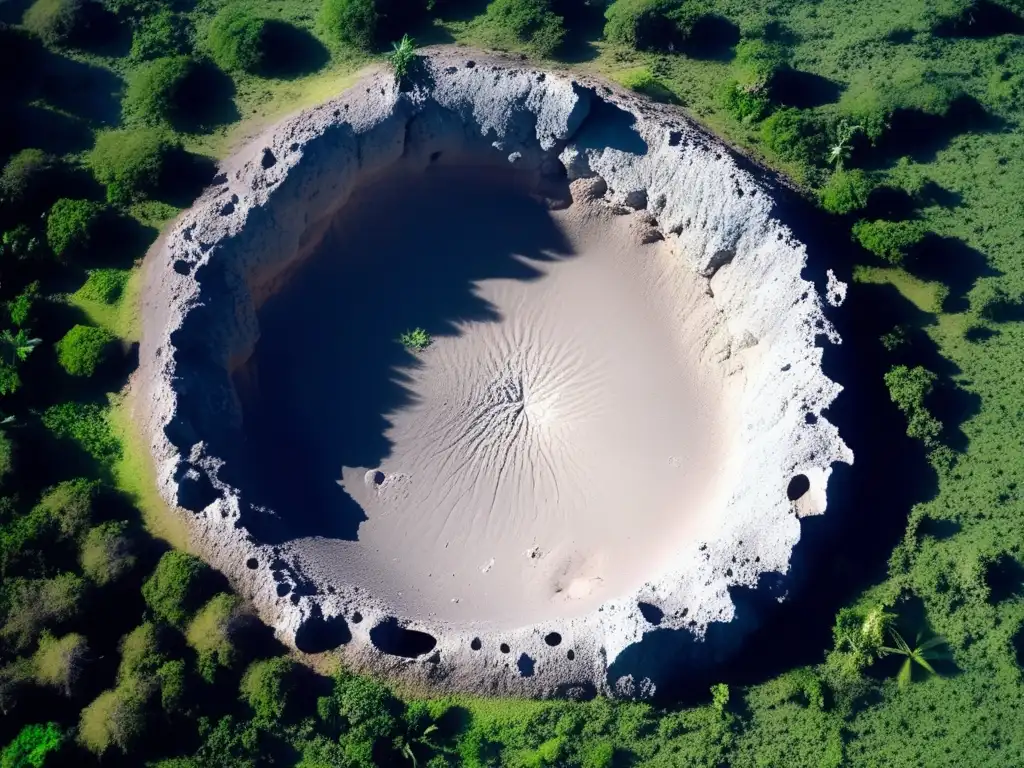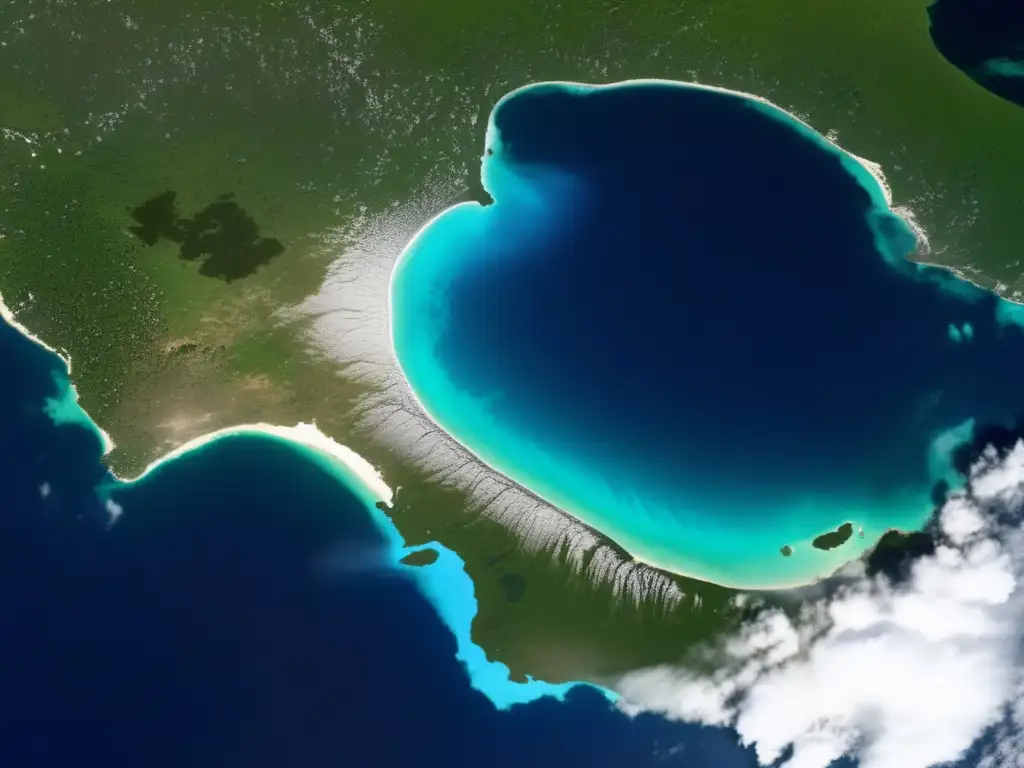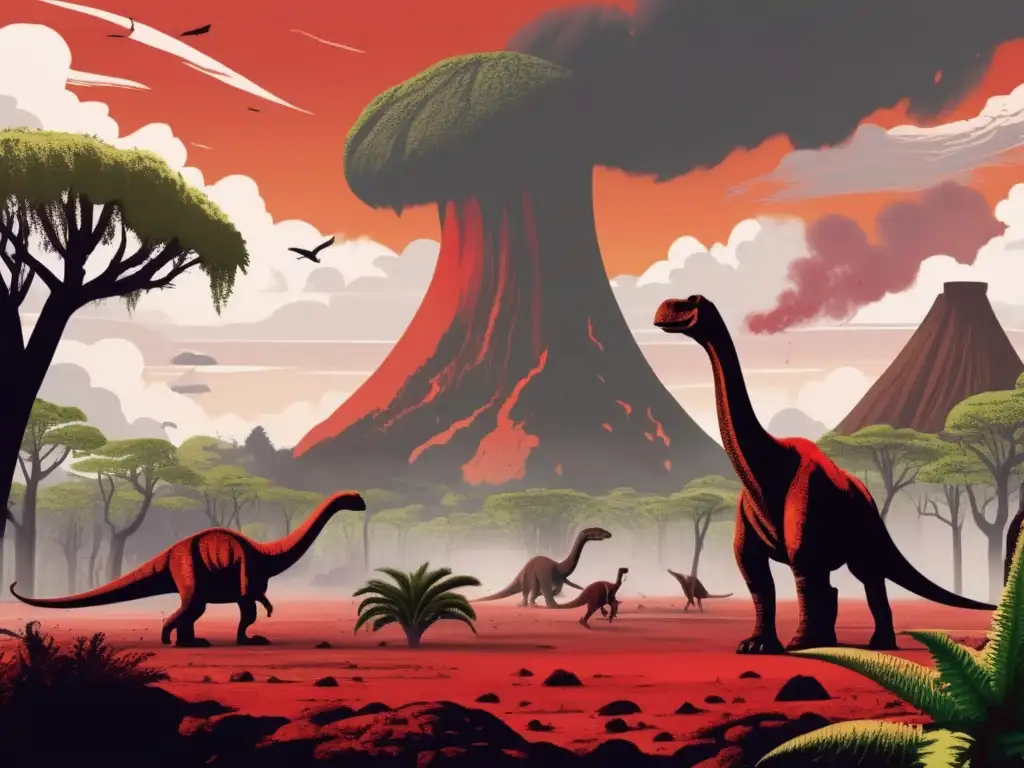The Yucatan Peninsula: Ground Zero For The Dinosaur Extinction

Introduction
The Yucatan Peninsula is an area in Mexico that gained notoriety due to the Chicxulub crater, a massive impact site that measures approximately 180 kilometers across. Scientists have established that this impact event caused the extinction of the dinosaurs approximately 65 million years ago. This article will explore how the asteroid responsible for this catastrophe impacted the Yucatan Peninsula, what the effects were, and what scientists are learning from this catastrophic event.
The Asteroid Impact and Its Effects

The Size and Composition of the Asteroid
The asteroid that hit the Yucatan Peninsula was a chondrite, a type of asteroid composed primarily of silicate and metallic minerals. The asteroid that struck the Earth was estimated to have measured about 10-15 kilometers in diameter, with a mass of approximately 1 trillion metric tons.
The Impact Event
At the time of impact, the asteroid was traveling at a speed of about 30 kilometers per second. The Chicxulub impact event produced a shock wave that traveled through the atmosphere and the Earth's crust. The impact created a massive crater that was later discovered in the 1970s by geophysicists studying the Yucatan Peninsula. The impact released an enormous amount of energy, equivalent to billions of Hiroshima bombs.
Impact Effects on Climate and Atmosphere
The impact released massive amounts of dust and debris into the atmosphere, resulting in a prolonged period of darkness and cooling. The cooling of the global climate triggered a mass extinction event that wiped out almost 75% of all plant and animal species, including the dinosaurs.
The Chicxulub Crater and Scientific Discoveries

Discovery and Exploration of the Chicxulub Crater
The Chicxulub crater was discovered in the 1970s when geophysicists were surveying the Yucatan Peninsula. The first drilling expedition to the Chicxulub crater was in 2001, where scientists drilled 1,511 meters below the surface to collect rock samples.
The Significance of the Chicxulub Crater for the Study of Asteroid Impacts
The Chicxulub crater is one of the best-preserved impact sites in the world, making it a valuable case study for scientists studying asteroid impacts on Earth and other planets. Scientists have also been able to use the Chicxulub crater to develop models of the impact's effects on the environment, allowing them to better understand the nature and extent of the mass extinction event that occurred approximately 65 million years ago.
Other Impact Events and Their Effects

The Tunguska Event
In 1908, an asteroid or comet exploded over Tunguska, Russia, releasing energy equivalent to around 10-15 megatons of TNT. Although no one was killed in the event, it flattened trees within a radius of 40 kilometers and was detected as far away as Britain.
The Barringer Crater
The Barringer Crater in Arizona, USA, was formed by an asteroid impact approximately 50,000 years ago. The crater measures approximately 1.2 kilometers in diameter and 170 meters deep.
Frequently Asked Questions

-
What caused the dinosaur extinction?
The dinosaur extinction was caused by a massive asteroid impact on the Yucatan Peninsula approximately 65 million years ago.
-
How big was the asteroid that hit the Yucatan Peninsula?
The asteroid that hit the Yucatan Peninsula was approximately 10-15 kilometers in diameter and had a mass of approximately 1 trillion metric tons.
-
What were the effects of the impact on climate and atmosphere?
The impact released massive amounts of dust and debris into the atmosphere, resulting in a prolonged period of darkness and cooling. The cooling triggered a mass extinction event that wiped out almost 75% of all plant and animal species, including the dinosaurs.
-
What is the significance of the Chicxulub crater?
The Chicxulub crater is one of the best-preserved impact sites in the world, making it a valuable case study for scientists studying asteroid impacts on Earth and other planets.
-
What is the Tunguska Event?
The Tunguska Event was an asteroid or comet explosion that occurred over Tunguska, Russia, in 1908, releasing energy equivalent to around 10-15 megatons of TNT.
Conclusion
The Chicxulub crater is a critical case study for scientists studying asteroid impacts and their catastrophic effects on the environment. Through their research on the crater and the asteroid impact, scientists are learning more about the nature and extent of mass extinction events, such as the dinosaur extinction, and what they can tell us about our planet's history. Thanks for reading and don't forget to share your thoughts in the comments section below.
Additional Resources

If you want to learn more about asteroid impacts, check out these resources:
- NASA Asteroids, Comets, and Meteors
- Chicxulub Impact Crater and Dinosaur Extinction
- Asteroid Impact - Britannica
 From Impact To Aftermath: The Lifecycle Of An Asteroid Strike
From Impact To Aftermath: The Lifecycle Of An Asteroid Strike Scars On Our Planet: Unveiling Impact Craters
Scars On Our Planet: Unveiling Impact Craters The Vredefort Dome: A Glimpse Into An Ancient Catastrophe
The Vredefort Dome: A Glimpse Into An Ancient CatastropheIf you want to discover more articles similar to The Yucatan Peninsula: Ground Zero For The Dinosaur Extinction, you can visit the Asteroid Impacts category.
Leave a Reply

Articulos relacionados: